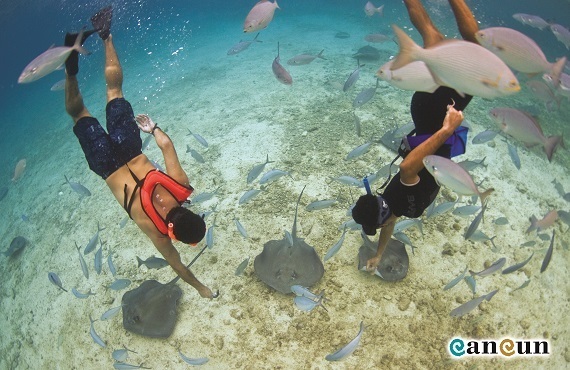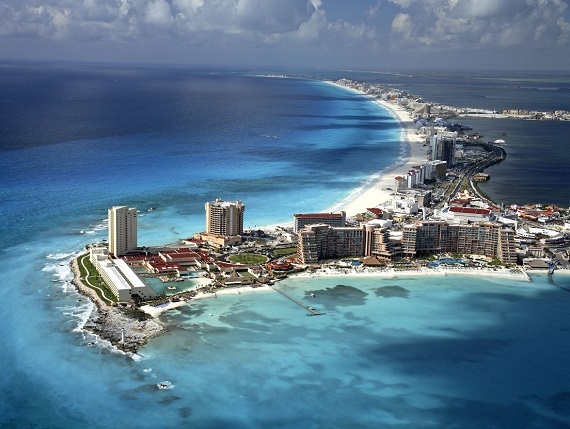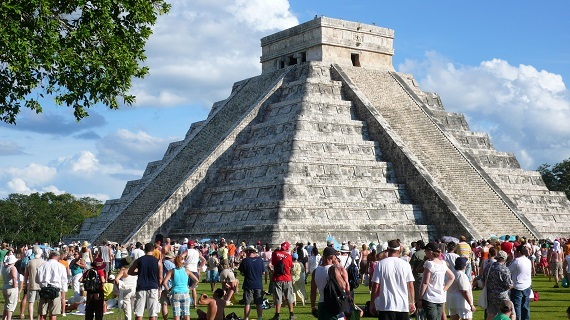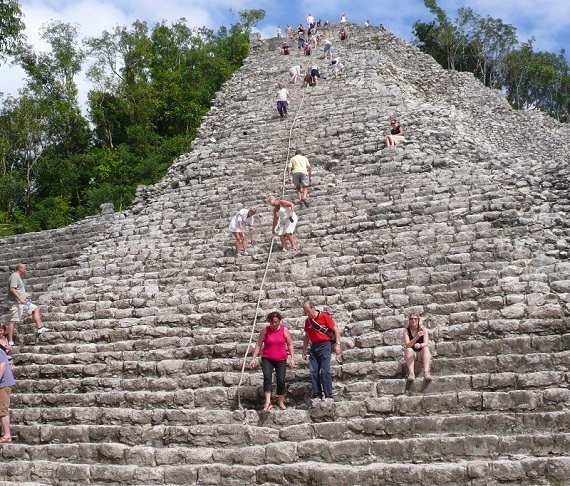It's mid-1974, and the front section of your daily paper is packed with stories about Gerald Ford becoming the 38th president of the U.S. In the sports section, Muhammad Ali is predicting he'll regain his heavyweight title in an upcoming "Rumble in the Jungle" with George Foreman. Readers who go on to the travel section are treated to a full-page, eye-catching ad for a new resort sprouting up in Mexico, but on a spot they likely never heard of.
The ad showed a pristine, palm-lined beach mussed up only by a single line of footprints - without showing who made them - sauntering down the sands as far as you could see. Under the headline "Walk in the Footsteps of Mayan Kings," the ad touted a project being built by the Mexican government on an island edging the country's Caribbean coast.
What prompted the Mexican feds and other investors to pump $100 million into a uninhabited strip of sand dunes and sagebrush way out in the middle of nowhere? The skinny little island didn't even show up on the maps.
A Computer Found It
The story goes back to 1969, when the Mexican government decided to jump start its until-then rather modest tourism business. Mega-resorts - built from scratch - would be the name of the game. Miles of beaches would be lined with luxurious hotels built to look like tropical palaces. Airline flights from cities around the globe would make it easy to get there. And there'd be fun things to see and do for everyone, from bakers to bankers.
Named to spearhead the project was a new agency that came to be known as INFRATUR and later on FONATUR, short for the Fondo Nacional de Fomento al Turismo (National Fund to Promote Tourism). It was staffed by experts in fields ranging from marketing to land management, backed up by economists, archaeologists, sociologists, entomologists and a few programmers for some newfangled machines called computers.
FONATUR's researchers scampered around the country for two years collecting data on fresh water sources, beach quality, ecological concerns and the like from possible resort locations along 11,000 miles of beaches. The facts and figures went into a computer, and out came a number of top-rated sites. Heading the list was an island at the tip of eastern Mexico's Yucatan Peninsula. The local Maya fishermen called it Kaank'uun.
Re-tagged with the more marketable name of Cancun, the resort began taking shape in 1972 as sand dunes and mangrove jungles gave way to roads, sidewalks, power lines, water systems and the first of two causeways linking both ends of the island to the mainland. The first hotel, the 70-room Playa Blanca, opened in May 1974.
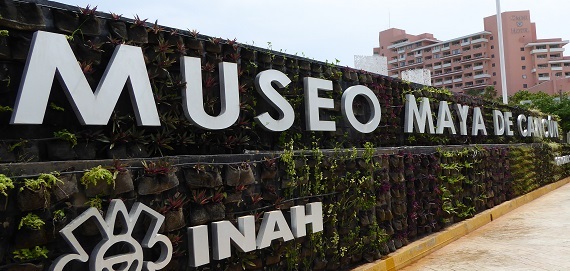
Tourists can bone up on the Maya culture at a Cancun museum before visiting the archaeological sites. Photo by Bob Schulman.
Fast-forward to year-end 1975, and bienvenidos signs are welcoming visitors to Cancun at an international airport, a marina, a golf course and at 10 hotels opened so far with several more in the works. Guests are flying in on two Mexican airlines from Mexico City, international passengers are arriving on the first scheduled flights from the U.S. (operated by Air France from New York) and a half-dozen U.S. carriers are awaiting the green light to serve Cancun.
By the end of the decade, as more and more hotels sprouted up - many built to look like Maya pyramids, Moorish castles and Andalusian palaces - and as word spread about the natural beauty of the Cancun area and its fabulous, powdery white sand beaches, and about the wonders of the nearby Maya archaeological sites such as Tulum, Coba and Chichen itza, the resort was well on its way to making the "A" list of the country's tourism draws.
Cancun now hosts some 6 million guests a year and is one of the most popular vacation getaways on the planet.
Photos courtesy of the Cancun Convention and Visitors Bureau unless otherwise noted.
